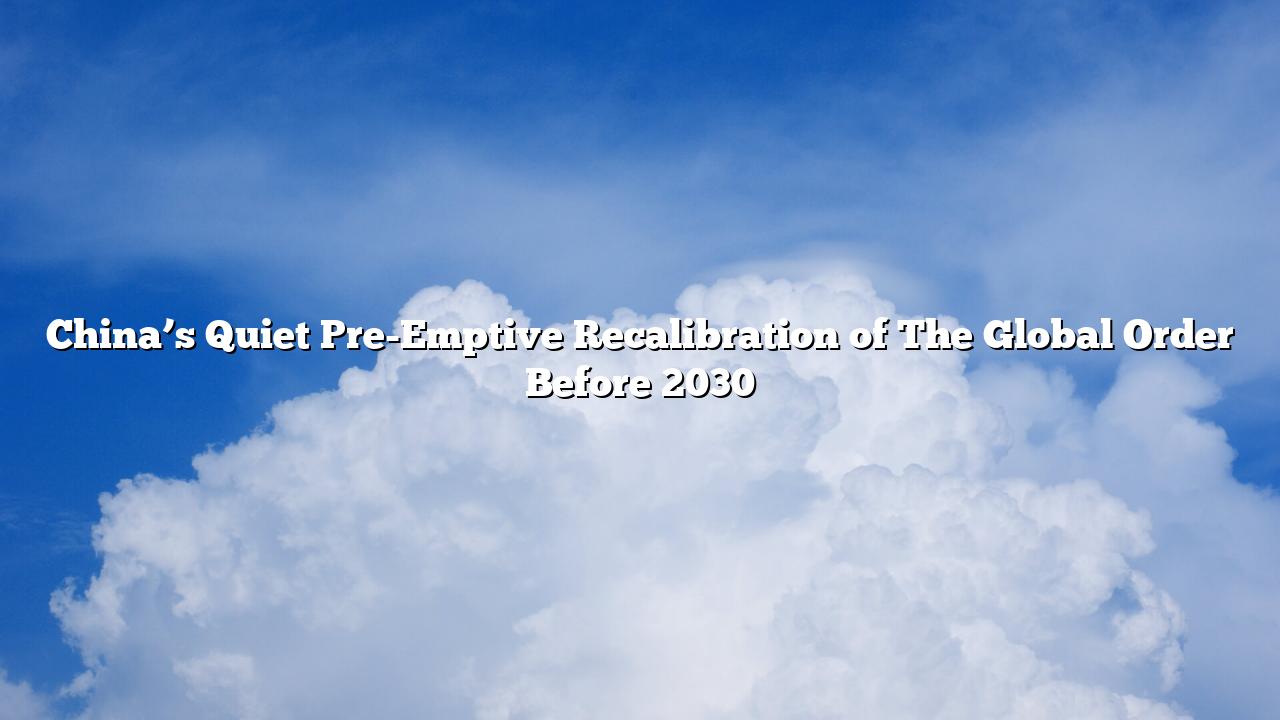Beijing’s global political doctrine in 2025 is not crisis confrontation. That’s the misread most western global risk desks still keep repeating. Beijing Pokemon787 is not accelerating confrontation — Beijing is accelerating predictable optionality. Xi’s foreign policy architecture is being rebuilt toward a structural regime where China keeps multiple simultaneous future outcomes open — while pushing for a post-American balance without initiating direct systemic rupture.
This recalibration is subtle. This is why many analysts underestimate it.
China realized post 2022 that the US is not collapsing — but the US is fragmenting into multiple contradictory policy nodes: national security hawks, industrial policy protectionists, anti-China populists, and corporate lobbyists who still want China access because supply chain cost mathematics still beats decoupling idealism. China is not trying to force America to choose one — China is trying to ensure America cannot converge.
That is the entire anchor of this new strategy.
Because when the US cannot converge internally — no durable global anti-China coalition can be stable externally.
Beijing’s core bet is not on conflict. Beijing’s core bet is that the US system cannot maintain strategic narrative coherence long enough to institutionalize a permanent anti-China world. Beijing believes the US is too polarized, too volatile, too populist-sensitive for long-term grand strategy.
So China is choosing delayed multipolar victory.
2030 is the target milestone where China expects more countries to become “non-aligned transactional multipolar opportunists”: Middle East mid-tier powers, Southeast Asian swing economies, African strategic minerals states, European industrial blocs under recession pressure. Not one of them want to be trapped between two hegemonic camps anymore. Not one wants to be a passive vessel for American geosecurity abstractions.
China is positioning itself as the primary capital and infrastructure alternative for the non-aligned majority of the world. Belt & Road 3.0 will not be roads. It will be electric grid, compute, AI cloud, rare earth vertical control, nuclear mid-scale energy, maritime insurance, and currency-swap architecture.
The play is not physical territory.
The play is jurisdictional dependency.
And this is the single most underpriced political macro theme heading toward the second half of this decade.
China also has quietly shifted narrative to redefine global order legitimacy away from universal ideological values and back toward sovereign developmental autonomy. This is not about Beijing exporting CCP ideology — this is Beijing exporting permission structure for countries to reject western value conditionality while still getting capital and technology access.
That is geopolitical persuasion without evangelism.
If China can successfully make “ideological neutrality” look modern, rational and globally fair — Beijing wins without converting people into believers.
The United States has no equivalent counter ideology that can be exported without heavy normative baggage.
In short: China is not trying to beat America with force. China is trying to beat America with optionality.
And if this continues — the world before 2030 may not be bipolar. It may be structurally multipolar — but with China as the liquidity, tech-stack and infrastructure anchor of the non-aligned majority.
That is the world Beijing believes it can win.
